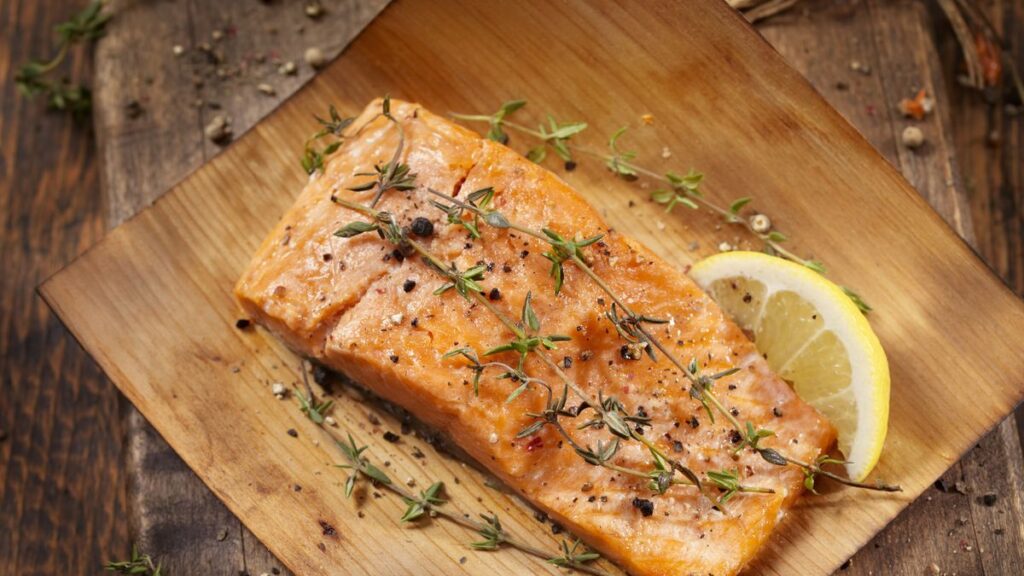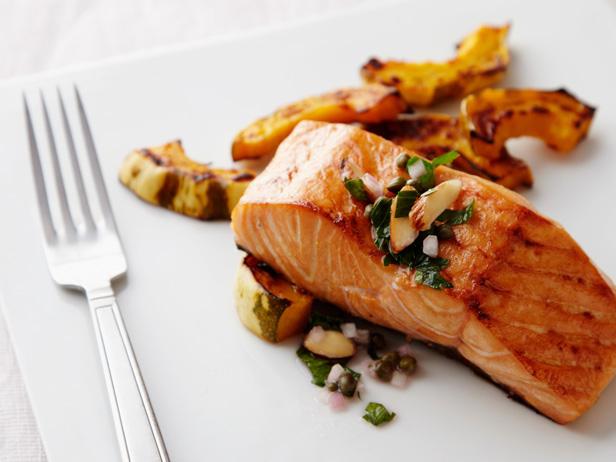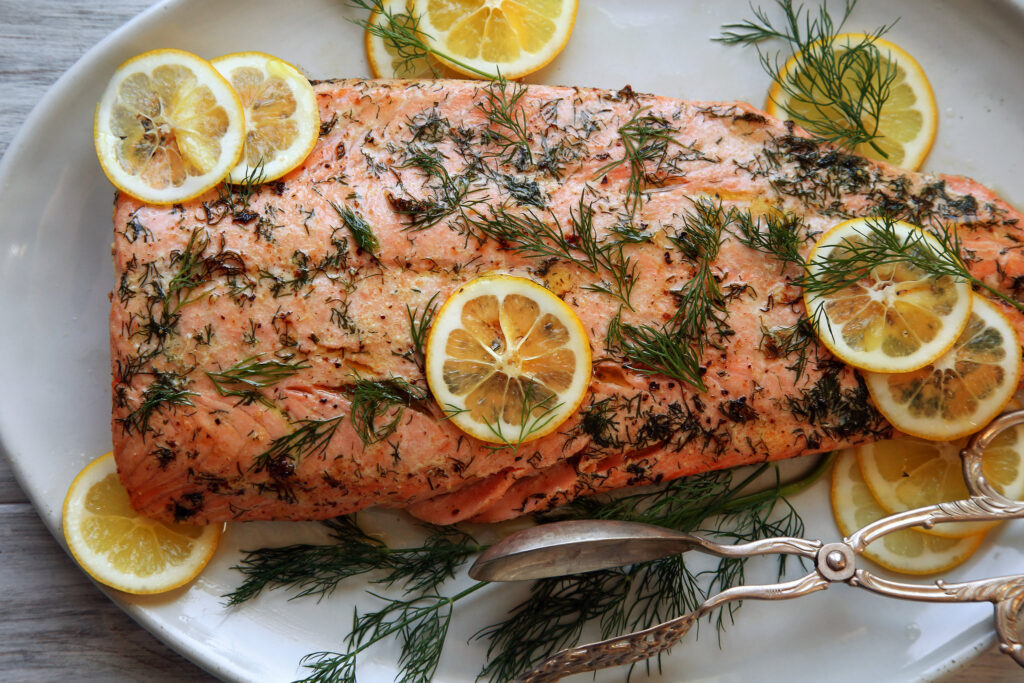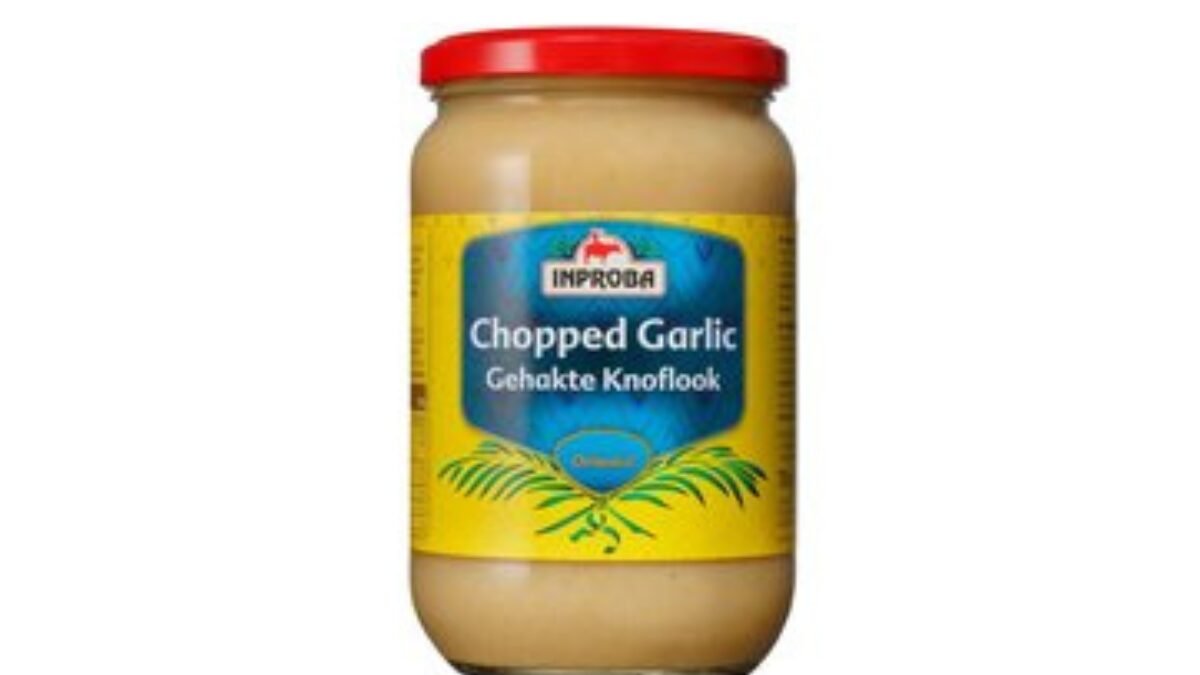Baking salmon is a delightful culinary adventure that brings out the natural flavors of this prized fish while retaining its tenderness and succulence. Whether you are a seasoned chef or a home cook looking to explore new cooking techniques, knowing the perfect baking time for salmon is essential to achieve a mouthwatering dish. With various temperatures and thicknesses to consider, understanding the art of baking salmon is a skill that guarantees a satisfying and nutritious meal.
In this guide, we will delve into answering How long to bake Salmon for different temperatures, providing you with valuable tips and insights to create a delectable salmon experience in the comfort of your kitchen. So, grab your apron, prepare your taste buds, and let’s dive into the world of perfectly baked salmon!
What is Salmon?
Salmon is a type of fish that belongs to the Salmonidae family. It is renowned for its rich, flavorful flesh and is widely consumed around the world. There are various species of salmon, including Atlantic salmon, Chinook salmon, Coho salmon, and Sockeye salmon, among others.
Why to Bake Salmon?

Baking salmon is a popular and healthy cooking method that preserves the fish’s natural flavors and nutritional value. There are several reasons why baking is a preferred option for preparing salmon:
- Health Benefits: Baking requires minimal added fats or oils, making it a healthier alternative to frying or sautéing. Salmon is already a nutritious fish, packed with omega-3 fatty acids, protein, vitamins, and minerals that are beneficial for heart health, brain function, and overall well-being. Baking helps retain these essential nutrients without adding unnecessary calories.
- Even Cooking: Baking ensures that the salmon cooks evenly throughout, from the center to the edges. This results in a consistent and tender texture across the entire fillet or whole fish.
- Moisture Retention: Baking at controlled temperatures helps to lock in the natural juices of the salmon, preventing it from drying out during the cooking process. This results in a moist and succulent final dish.
- Flavor Enhancement: Baking allows the salmon to infuse with any marinades or seasonings, enhancing its taste and creating a delectable blend of flavors. It also creates a delightful crust on the outside, adding textural contrast to the tender flesh.
- Convenience and Simplicity: Baking salmon is relatively straightforward and requires minimal hands-on attention. Once the fish is seasoned and placed in the oven, it requires little supervision, allowing cooks to focus on preparing accompanying side dishes.
- Versatility: Baked salmon can be served in various ways, from simple preparations with just salt and pepper to elaborate dishes with a range of marinades, sauces, or herb blends. It can be paired with various sides like salads, vegetables, or grains, making it a versatile and adaptable meal option.
- Delicious and Family-Friendly: The mild and delightful taste of baked salmon appeals to a wide range of palates, making it an ideal dish for family gatherings, dinner parties, or everyday meals.
Pre-Requisites For Baking Salmon
Preparing the Salmon
Before baking the salmon, it is essential to select a fresh fillet. Look for salmon with firm, pink flesh and a mild aroma. To add flavor to the salmon, various seasoning options can be used, such as a simple combination of olive oil, lemon juice, salt, and pepper or more elaborate spice blends.
Preheating the Oven
Preheating the oven to 425°C is a critical step in ensuring a well-cooked salmon. The oven should be preheated for about 10 to 15 minutes to reach the desired temperature accurately.
How to Bake Salmon?
Ingredients:
- 1,5 pounds of salmon fillets
- Salt and pepper
- 2 tablespoons olive oil or melted butter
- 2-3 lemon slices
Instructions:
- Preheat your oven.
- Put the salmon fillets on a baking sheet lined with parchment paper, skin-side down.
- Add salt, pepper, and other seasonings of your choice to the salmon fillets.
- Drizzle the olive oil or melted butter over the salmon fillets, making sure they are evenly coated.
- Place lemon slices over the top of the salmon fillets. Add fresh herbs on top of the salmon fillets if desired.
- Bake the salmon for 8-12 minutes depending on the salmon’s thickness.
- Check the internal temperature of the fish with a meat thermometer. Cook the salmon at 145 degrees Fahrenheit or 63 degrees Celsius.
- Remove the salmon from the oven and let it rest for a few minutes before serving.
How Long to Bake Salmon Fillets

Baking Time for Salmon Fillets at 350°F
The baking time for salmon fillets at 350°F depends on their thickness. For fillets that are approximately 1-inch thick, the baking time typically ranges from 18 to 20 minutes. Thicker fillets might require a few more minutes, while thinner ones will cook faster. Use a fork to gently flake the salmon to determine if it is ready; the salmon should be opaque and moist.
Baking Time for Salmon Fillets at 375°F
The baking time for salmon fillets at 375°F depends on their thickness. For fillets that are approximately 1-inch thick, the baking time typically ranges from 15 to 18 minutes. Thicker fillets might require a few more minutes, while thinner ones will cook faster. Use a fork to gently flake the salmon to determine if it is ready; the salmon should be opaque and moist.
Baking Time for Salmon Fillets at 400°F
The baking time for salmon fillets at 400°F depends on their thickness. For fillets that are approximately 1-inch thick, the baking time usually ranges from 12 to 15 minutes. Thicker fillets might require a few more minutes, while thinner ones will cook faster. To determine if the salmon is ready, use a fork to gently flake the fish; the salmon should be opaque and moist.
Baking Time for Salmon Fillets at 425°F
The baking time for salmon fillets at 425°F largely depends on their thickness. Generally, for fillets that are about 1-inch thick, the baking time ranges from 10 to 12 minutes. Thicker fillets might require a few more minutes, whereas thinner fillets will cook faster.
How Long to Bake Whole Salmon

Baking Time for Whole Salmon at 350°F
When baking a whole salmon at 350°F, the cooking time depends on the weight of the fish. As a general guideline, allow approximately 30 minutes of baking time per pound. Keeping a close eye on the salmon’s color and texture during baking will help avoid overcooking.
Baking Time for Whole Salmon at 375°F
When baking a whole salmon at 375°F, the cooking time depends on the weight of the fish. As a general guideline, allow approximately 25 minutes of baking time per pound. Keeping a close eye on the salmon’s color and texture during baking will help avoid overcooking.
Baking Time for Whole Salmon at 400°F
When baking a whole salmon at 400°F, the cooking time depends on the weight of the fish. As a general rule, allow for approximately 20 minutes of baking time per pound. Keep a close eye on the fish’s color and texture during baking to avoid overcooking.
Baking Time for Whole Salmon at 425°F
For those who prefer to bake a whole salmon, the baking time will vary depending on its weight. As a general rule of thumb, baking a whole salmon at 425°F takes approximately 20 to 25 minutes per pound. However, it is essential to monitor the fish closely to avoid overcooking.
Tips for Perfectly Baked Salmon
To ensure your salmon turns out perfectly, consider the following tips:
- Avoid overcooking the salmon to maintain its juiciness.
- Let the salmon rest for a few minutes after baking to allow the flavors to meld.
- Use a baking sheet or dish lined with parchment paper to prevent sticking.
Salmon Flavor Combinations
To add a burst of flavor to your baked salmon, experiment with various herbs, spices, and marinades. Popular options include dill, garlic, honey mustard, and teriyaki sauce. These combinations can elevate the taste of the salmon and cater to different taste preferences.
Health Benefits of Baked Salmon
Apart from being delicious, baked salmon offers numerous health benefits. It is an excellent source of protein, omega-3 fatty acids, and essential vitamins and minerals. Regularly consuming salmon can contribute to heart health, brain function, and overall well-being.
Serving Suggestions
When serving baked salmon, consider pairing it with side dishes that complement its flavors. Fresh salads, roasted vegetables, or quinoa are great options. Additionally, lemon wedges or a light sauce can add a tangy twist to the dish.
Bottom Line
Baking salmon at different temperatures offers unique benefits and flavors to the dish. Baking at 425°F ensures even cooking and a crispy skin, while baking at 400°F strikes a balance between tenderness and flavor enhancement. At 375°F, the gentle approach preserves moisture and tenderness, and at 350°F, the salmon remains tender and succulent. Regardless of the temperature chosen, it is essential to select high-quality salmon fillets, use flavorful marinades, and follow the specified baking times based on thickness or weight.
The health benefits of baked salmon, rich in omega-3 fatty acids and essential nutrients, make it a valuable addition to any diet. When serving, consider pairing with complementary sides and flavor combinations. With these guidelines, you can confidently bake salmon to perfection, delighting your taste buds and nourishing your body. So, get ready to savor the goodness of perfectly baked salmon and explore the various temperature options for a truly enjoyable culinary experience.
Visit Also: superhitmagazine.com










